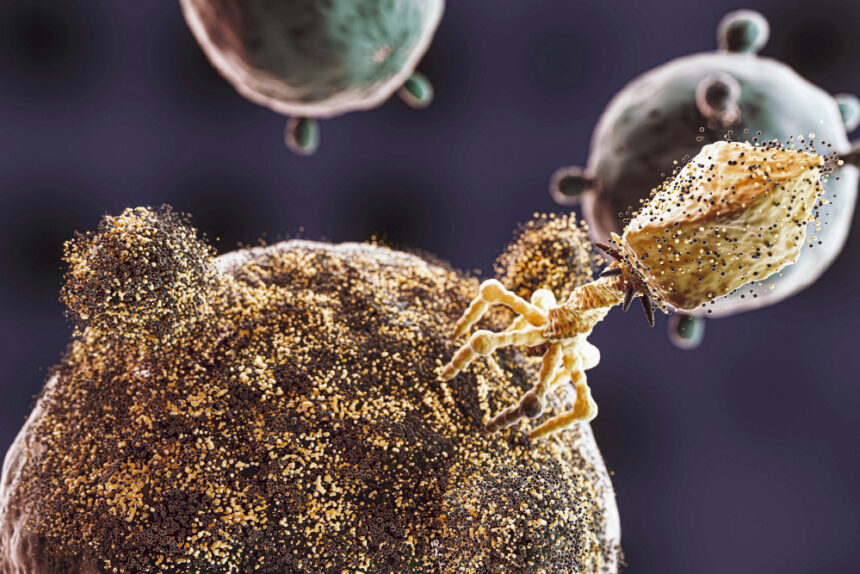In the microscopic world, survival requires cunning, adaptability, and often, a complete disregard for the host organism. Among the most chilling strategies in this domain is that of a recently studied parasite that not only invades human cells but dismantles them and uses their molecular debris as a cloak of invisibility. This disturbing method of subterfuge reveals a deeper layer of biological warfare, showcasing how certain pathogens can co-opt the very building blocks of our bodies for their own gain.
Human cells, which form the foundation of our organs, tissues, and immune defense, are typically well-equipped to recognize and respond to foreign invaders. But when a parasite disguises itself as part of the host, the immune system may be left blind to the threat. This emerging research has not only fascinated scientists but also heightened awareness about how vulnerable our cellular architecture can be to microscopic threats.
How the Parasite Attacks Human Cells
The process begins when the parasite, equipped with specialized surface proteins, identifies and targets a specific type of human cell. It then latches on and infiltrates the cell membrane, often through mechanisms that mimic normal cellular processes. Once inside, it begins a destructive process, dismantling the internal machinery of the cell and effectively killing it.
Unlike viruses, which hijack the host cell’s machinery to reproduce, this parasite exhibits a more ruthless tactic. After the host human cell is destroyed, the parasite collects components of the cell membrane and other cellular material. These remnants are then incorporated into its own surface, creating a deceptive exterior that mimics the host tissue.
This camouflage makes it extraordinarily difficult for the immune system to distinguish the parasite from natural cells. White blood cells, which patrol the body in search of foreign invaders, may completely overlook the parasite cloaked in human cell debris.
Camouflage: A Biochemical Trick with Deadly Consequences
The parasite’s ability to wear the remains of human cells as a disguise is more than a grotesque trick—it’s a brilliant form of biochemical deception. By mimicking the surface markers of the cells it destroys, the parasite evades immune detection. This not only allows it to survive longer within the host but also provides an opportunity to spread and infect new cells unchallenged.
Scientists studying this behavior have discovered that the parasite selectively integrates proteins and lipids from the host human cells into its membrane. This selection isn’t random. The parasite chooses markers that are least likely to trigger an immune response, thereby maximizing its stealth.
The implications of this are profound. It suggests that some parasites are not only able to defeat human defenses but are intelligent in their method of disguise. This level of adaptation indicates an evolutionary arms race between the parasite and the immune system, one that the parasite appears to be winning in certain contexts.
Impacts on Human Health and Disease Progression
This parasitic strategy has severe consequences for human health. Infections caused by such stealthy organisms are harder to diagnose, more difficult to treat, and often more fatal. Since the immune system fails to recognize the parasite as a threat, the body does not mount an adequate defense.
In many cases, individuals may remain asymptomatic for extended periods, during which the parasite can cause significant internal damage. By the time symptoms manifest, the infection may have progressed to an advanced stage, making recovery more challenging.
Researchers have observed that in patients with compromised immune systems—such as those undergoing chemotherapy or suffering from HIV/AIDS—this type of parasite poses an even greater risk. The inability of weakened immune defenses to detect the disguised intruder can lead to systemic infections and organ failure.
The Science Behind Human Cell Mimicry

What makes this parasite’s behavior even more alarming is its precision in mimicking human cells. Scientists have conducted extensive biochemical analyses to understand how the parasite identifies which cell components to use. It appears that the parasite is capable of reading cellular signals and selectively harvesting parts that contribute to its disguise.
This mimicry is not a static process. As the parasite moves through different tissues, it adapts by updating its camouflage with new cellular material. This dynamic transformation allows it to evade immune detection even as the host begins to mount a more focused response.
This behavior highlights a remarkable evolutionary adaptation. Not only is the parasite able to manipulate the host’s biology, but it also demonstrates a form of cellular intelligence, responding in real-time to immune pressures and environmental changes within the body.
Potential Treatments and Scientific Breakthroughs
The discovery of this parasitic strategy has prompted a surge in research aimed at developing new therapeutic approaches. Traditional treatments that rely on the immune system to identify and attack pathogens are ineffective against a parasite that looks like the body’s own cells.
Scientists are now exploring treatments that target the parasite’s internal structure rather than its surface. By identifying unique metabolic pathways or genetic markers within the parasite, researchers hope to develop drugs that can kill the parasite without harming human cells.
One promising avenue is the use of monoclonal antibodies that can bind to hidden parasite proteins exposed only during certain life stages. Another strategy involves using nanotechnology to deliver drugs directly to infected tissues, bypassing the need for immune detection.
Ethical and Evolutionary Questions Raised
This discovery also raises profound questions about the nature of life and evolution. How did such a complex strategy evolve? Did the parasite co-evolve with human hosts, or is this a recent adaptation triggered by environmental pressures?
Some scientists suggest that this form of mimicry may be more widespread than currently known, potentially used by other microorganisms that have not yet been studied in detail. If so, it may redefine how we understand infection and immune evasion.
There are also ethical questions to consider, especially when developing treatments that target such cunning parasites. Any drug or therapy that alters how human cells are identified and attacked must be meticulously tested to avoid harming the host in the process.
A Hidden War Within Our Bodies
The parasitic tactic of destroying and disguising itself in human cells represents one of the most devious biological survival strategies ever discovered. It underscores the complexity of host-pathogen interactions and the ongoing evolutionary battle for dominance within the human body.
As we continue to study these microscopic invaders, one thing becomes clear: our understanding of human cells and their interactions with pathogens must evolve. The more we uncover about how these organisms operate, the better equipped we’ll be to defend ourselves against them.
This hidden war within our bodies reminds us that even at the cellular level, nature is constantly adapting, innovating, and fighting for survival. In the end, it’s not just about the parasite or the host—it’s about who adapts faster and who ultimately wins the invisible battle inside us all.

